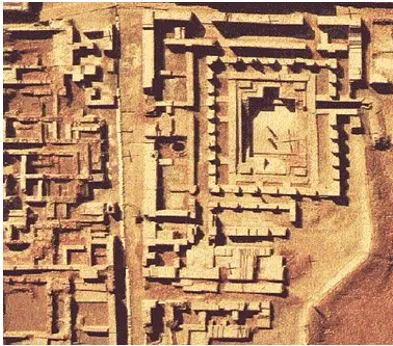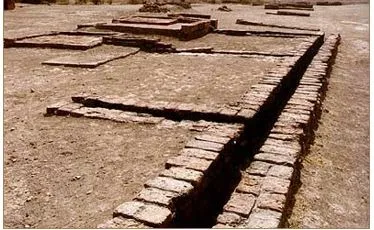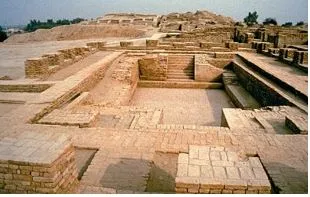

20th September 2024 (8 Topics)
Context
On September 20, 2024, the centenary of John Marshall’s groundbreaking article in The Illustrated London News is being observed. Marshall, then-Director General of the Archaeological Survey of India (ASI), announced the discovery of the Indus Valley civilization, now known as the Harappan civilization. This event has significant historical implications, as it revealed a sophisticated urban culture in South Asia that existed around 2500 BCE, reshaping understandings of ancient history.
About Harappan Civilization
- The Harappan civilization, also known as the Indus Valley civilization, flourished during the Bronze Age, approximately from 3300 BCE to 1300 BCE.
- Early Harappan: 3300–2600 BCE
- Mature Harappan: 2600–1900 BCE
- Late Harappan: 1900–1300 BCE
- Other important Civilizations:Egyptian (7000BC to 3000BC) and Mesopotamian (6500BC to 3100BC) civilizations.
- It is characterized by advanced urban planning, agricultural practices, and trade networks.
- The civilization was technologically sophisticated, exhibiting expertise in various fields including metallurgy, ceramics, and hydraulic engineering.
- The name "Harappan" derives from the archaeological site of Harappa, one of the first sites to be discovered in modern-day Pakistan.
- Key features of the civilization include:
- Urban Planning: Cities like Harappa and Mohenjo-daro featured grid patterns, advanced drainage systems, and standardized fired-brick construction.
- Economy and Trade: The civilization engaged in extensive trade with regions such as Mesopotamia, evidenced by found seals and artifacts.
- Script and Art: The Harappans developed a writing system (Indus script), and their artisans created intricate seals, pottery, and jewelry.

Architectural features (Mohenjodaro)
Town Planning
- The city showcases a well-planned large-scale town layout.
- Division of the City: Mohenjodaro was divided into two main parts: the Citadel and the Lower Town.
- Citadel: Constructed on mud brick platforms, it was walled and likely served special public purposes.
- Lower Town: Also walled, built on a raised platform, indicating a systematic approach to construction.
- Uniform Bricks: The buildings were made from uniformly sized bricks.
- Grid Pattern Streets: The roads and streets were laid out in a grid pattern, intersecting at right angles.
- Residential Buildings: The Lower Town featured residential buildings, typically centered around a courtyard.
- Privacy Features: Ground floor walls lacked windows, ensuring privacy; entrances did not directly expose the courtyard.
- Bathrooms and Drains: Every house had a brick-paved bathroom connected to street drains. Many houses also had staircases leading to upper levels.
Drainage System
- A well-designed drainage system was a hallmark of Harappan cities. Every house was connected to street drains made of mortar, lime, and gypsum.
- Cleanable Drains: Drains were covered with large bricks for easy lifting and maintenance.
- Sewage Pits: Pits were located on either side of the streets for sewage management.
- Long Channels: Long drainage channels with sumps for cleaning were constructed at intervals.
- Smaller Settlements: In places like Lothal, houses were made of mud bricks, and the drains used burnt bricks.
The Great Bath
- The Great Bath is one of the special buildings located on the citadel. It was used for religious ceremonies or public gatherings.
- Design: A large rectangular tank surrounded by corridors, with steps leading into the tank from the north and south. The tank was made watertight using mortar and gypsum.
- Connected Rooms: Rooms flanked the tank, one of which housed a large well, with water flowing into a massive drain
Key Excavations, Locations, Findings
- Mohenjo-daro, Harappa, Ganweriwala (all now in Pakistan), Rakhigarhi, and Dholavira(both in India) are the five biggest Harappan sites out of about 2,000 sites in the civilisational area, which is spread over 1.5 million sq.km. in India, Pakistan, and Afghanistan.
- There are about 1,500 sites in northwestern India, including in Gujarat, Haryana, Jammu and Kashmir, Maharashtra, Rajasthan, and Uttar Pradesh.
- The village of Daimabad on the banks of the Godavari river in Maharashtra is the southernmost outpost of the Harappan civilisation.
- There are about 500 sites in Pakistan, and a few in Afghanistan.
- The civilisation burgeoned on the banks of the Indus and Saraswati rivers, the latter of which is believed to have dried up circa 1900 BCE.
|
Harappa
|
|
|
Mohenjo-daro
|
|
|
Dholavira |
|
|
Rakhigarhi
|
|
|
Ganweriwala
|
|
|
Mehrgarh
|
|
Decline of Harappan Civilization
- Climatic Change could have affected agricultural productivity and water supply.
- Deforestation may have led to soil erosion and reduced agricultural output.
- Excessive Floods could have devastated settlements and agricultural lands.
- Unsustainable agricultural practices may have depleted resources and affected the ecosystem.
- Shifting or Drying Up of Rivers could have severely impacted water availability.
- The arrival of outside groups, possibly including the Aryans, might have contributed to the decline.
- A marked decline in distinctive artifacts, such as seals and pottery, suggests a breakdown in the civilization’s cultural practices.



